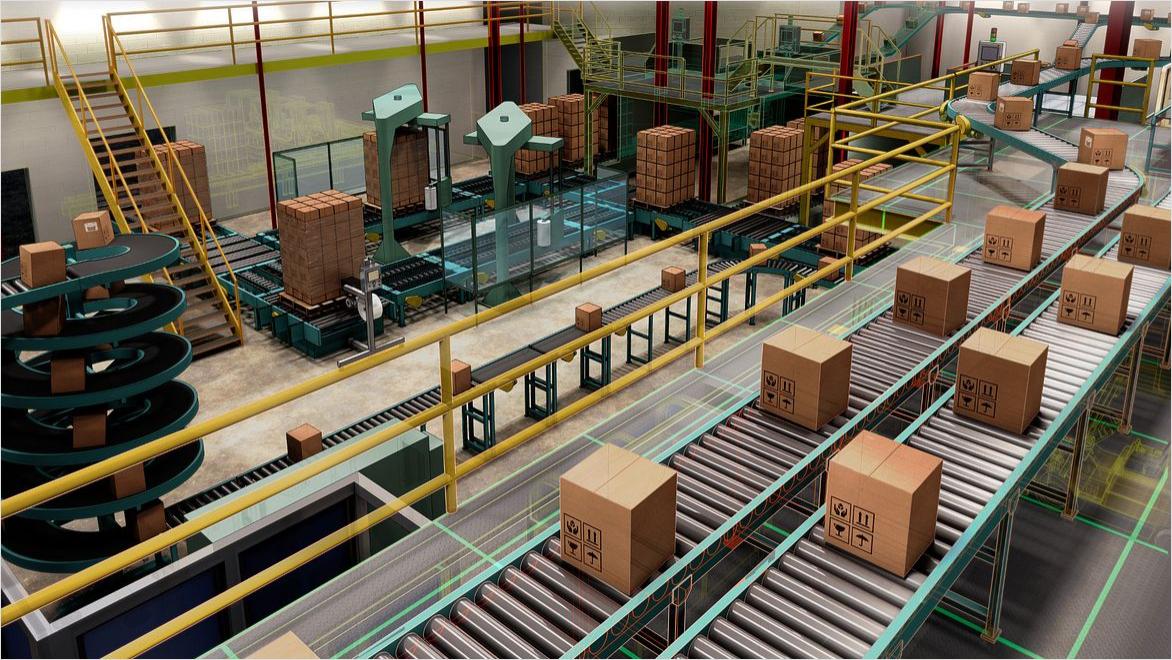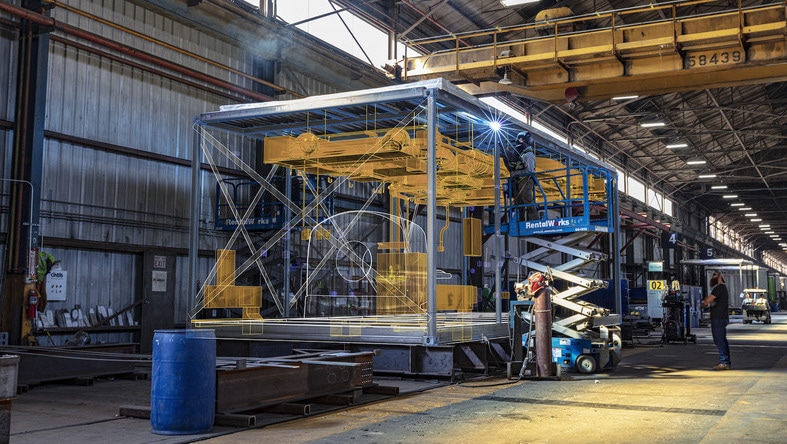& Construction

Integrated BIM tools, including Revit, AutoCAD, and Civil 3D
& Manufacturing

Professional CAD/CAM tools built on Inventor and AutoCAD
Industrial automation uses information technologies and control systems like robotics and sensors to carry out industrial tasks previously performed by human workers. Sectors such as automotive and electronics manufacturing (US Site), pharmaceuticals, and food and beverage processing commonly use industrial automation to improve quality, productivity and safety conditions.
With the introduction of a Model T assembly line in 1913, the Ford Motor Company introduced industrial automation to manufacturing. However, industrial automation became modern when General Motors incorporated the programmable logic controller (PLC) in 1968. PLCs can monitor and control multiple machines with programmed instructions, and GM pioneered its use in car manufacturing.
This early industrial automation focused on increasing productivity with 24-hour operation and lowering the costs of a human workforce. Today’s advanced industrial automation has added other high-level priorities to improve quality and make manufacturing as flexible (US Site) and data-informed as possible. This progression of industrial automation’s capabilities can be seen in the ascending stages of automation types, from basic automation to the most advanced technologies of Industry 4.0 and beyond.
While industrial automation comes with a high initial investment, it can pay for itself over time and confer several other benefits.
Industrial automation unlocks the potential to run a factory 24 hours a day, 365 days a year. The automated systems’ real-time data analysis can reduce production bottlenecks and downtime with predictive maintenance and regulate inventory.
Automated manufacturing offers a high degree of consistent repeatability and can automate quality validation to catch variations early, reducing waste and rework.
Industrial automation, such as robotics, can take over dangerous and dirty jobs from people, reducing injuries from repetitive stress and accidents while freeing employees for more complex tasks.
Monitoring devices collect real-time data from every step of an industrial automation system in centralised cloud software. Analysing that data can help streamline the supply chain, find new revenue streams and make better-informed decisions.
Robotics and other automated machines provide the flexibility to quickly reprogram changes in the assembly line.
The initial investment in industrial automation pays off over time because it can effectively run 24/7 with minimal human supervision. Also, the maintenance costs for modern manufacturing automation are relatively low.
Powerful product design and engineering tools for 3D mechanical design, simulation, visualisation and documentation.
Navisworks Manage, Navisworks Simulate software and the Navisworks Freedom 3D viewer for 5D analysis, design simulation and project review.
Viessmann
To serve the booming German heat pump market, Viessmann built a smart factory with a high degree of automation that increases production and improves logistics.
Image courtesy of Viessmann
Porsche
For its first fully electric sports car, Porsche used digital factory planning in Autodesk Navisworks to build a state-of-the-art, zero-impact facility, which leans on industrial automation such as driverless transport systems to maximise production flexibility.
Image courtesy of Dr. Ing. h.c. F. Porsche AG
BLOX
BLOX employs industrialised construction–the application of offsite manufacturing automations–to build hospital components in its Alabama factory for onsite assembly.
Read how the digital factory’s automated processes and connected data will define manufacturing’s future, offering a faster time to market, predictive maintenance, resource tracking and operational efficiencies.
Learn about highly digitalised and connected smart factories, why their automated systems and decision-making are essential for modern manufacturing, and the software that can help you work smarter, not harder.
This detailed infographic explains why a successful smart factory (US Site) transformation starts with convincing managers and executives that automating repetitive processes will reduce errors leading to injuries and waste, and optimise resource use and product quality.
The Smarter Shop video series imparts nuggets of wisdom on how micro-factory job shops can incorporate and benefit from industrial automation like machine monitoring, robotics and connected digital workflows on a small scale.
Researchers are training machine learning robotics systems (US Site) with CAD data to make assembly automation more flexible and adaptable to product changes.
An Autodesk survey of industrial machinery experts shows how the automated data exchange of cloud-connected software can bring system-wide efficiencies to their networks of suppliers and collaborators, among other insights.
An example of industrial automation could be a self-driving vehicle built to shuttle products and materials around a warehouse or factory. The mining industry uses autonomous or semi-autonomous trucks, trains, drills and other machinery to encourage safety and efficiency.
Large-scale industrial robots are commonly used for product assembly, welding, painting and assembly line picking. For more customisable operations, CNC (computer numerical control) machines automate cutting, drilling, milling and turning for manufacturing.
Another example is a process control system, which automates physical and chemical traits like temperature, flow rate and pressure for processes in facilities such as power plants and refineries.
There are three types of automation: industrial, fixed and flexible.
Industrial automation types have progressed from static assembly lines to flexible and intelligent integrated systems.
Fixed automation is a type of industrial automation used for very high-volume production. Making production changes to fixed automation is expensive and time-consuming. Programmable automation works best for batch production and offers electronic controls that can change certain operations with significant effort.
Flexible automation, such as CNC machines, is used for batch production and on-demand manufacturing, where the product varies. It has precise controls and can customise production with little downtime. Integrated automation is the most modern and advanced type, where a single control system monitors and manages an entire connected factory from IIoT (US Site) devices and cloud data analysis.
Advanced manufacturing faces a skills gap, with qualified workers in short supply; industrial automation can accomplish more with fewer people while putting skilled employees to better use on more complex tasks.
Industrial automation can benefit firms, yield higher productivity, better quality control, safer working conditions, reconfigurability, lower operating costs and a wealth of insights from a constant flow of harvested data.
There are disadvantages to industrial automation, including the high upfront cost and the time involved in setting it up.
Also, not every task or process can be automated or is a good candidate for automation. Machine automation is ideal for large-volume production requiring repetitive, consistent operations. Automation may not be the best choice when working with products of irregular or inconsistent shapes or with small, highly configurable production runs.
And while automation can make factory floors safer for people and create a need for skilled workers, it also replaces some jobs–another unavoidable disadvantage.




